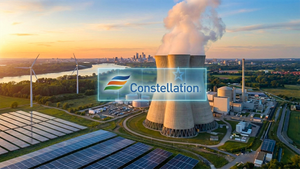The "Power to Gas Market - Growth, Trends, COVID-19 Impact, and Forecasts (2022 - 2027)" report has been added to ResearchAndMarkets.com's offering.
The power to gas market is expected to register a CAGR of more than 50% during the forecast period 2022 - 2027.
Companies Mentioned
- Nel ASA
- Sempra Energy
- GRT Gaz SA
- MAN Energy Solutions
- Sunfire GmbH
- Ineratec GmbH
- Electrochaea GmbH
- Astrea Power Ltd
- Siemens Energy AG
- Hitachi Zosen Inova AG
- AquahydreX Inc.
Key Market Trends
Power-to-hydrogen to be the Fastest-growing Segment
- Power-to-hydrogen includes a range of technologies that utilize electricity to perform electrolysis and split water into hydrogen and oxygen. When hydrogen is manufactured using renewable energy, it is called green hydrogen and can be used to store, transport, and utilize renewable energy. This helps minimize variable renewable energy curtailment from sources such as wind and solar, provide long-term storage and grid-balancing services via electrolyzers, and utilize existing gas transmission infrastructure for transporting energy in the form of green hydrogen over long distances.
- According to the International Energy Administration (IEA), hydrogen demand stood at 90 million ton in 2020, almost all of which was made from fossil fuels. However, green hydrogen capacities have been growing steadily and have doubled over the last 5 years, reaching nearly 300 MW in mid-2021.
- Additionally, nearly 350 projects with an aggregate capacity of 54 GW are currently under development and expected to come online by 2030, while 40 other projects accounting for nearly 35 GW capacity are in the early stages of development. If all planned projects are commissioned within time, it is expected that by 2030, the global green hydrogen supply from electrolyzers could reach 8 million ton per year.
- The green hydrogen produced by electrolyzers can also be directly used as a fuel either for transport, replacing oil in light vehicles, railways, and marine applications, or as a feedstock for industrial applications. Green hydrogen fuel cells can also be used for energy storage.
- Additionally, the technology offers advantages over current energy storage technologies, such as higher power storage capacity and longer discharge times. Hydrogen can also be injected directly into natural gas grids. However, hydrogen injection is subject to regulations due to safety and technical concerns and varies from country to country. For instance, the limit of hydrogen in natural gas grids in the United Kingdom is 0.1%, while in the Netherlands, it is 12%.
- Due to the falling costs of renewable energy technologies such as solar and wind, energy storage technologies such as power-to-gas (PtG) technology are becoming increasingly attractive, and the installed capacity of commercial electrolyzer systems has been growing steadily over the past few years. There are only a few commercially viable water electrolysis technologies, and the two most widely used technologies are alkaline water electrolysis (AWE) and proton exchange membrane (PEM) electrolysis.
Europe to Dominate the Market
- As of 2020, Europe was one of the largest regions in the power to gas market. The market is being driven by increasing investments and funding grants by governments in the region.
- In 2020, according to the European Commission, the refinery sector accounted for 48% of the hydrogen consumption, followed by the fertilizers and chemical sectors.
- Germany is one of the major countries in the European power to gas market. As of 2020, Germany was home to around 40 small power-to-gas pilot projects that harnessed surplus green power, mainly from wind and solar projects, to carry out electrolysis by splitting water into oxygen and hydrogen to produce zero-carbon fuel.
- According to Deutscher Verein des Gas- und Wasserfaches (DVGW), Germany is planning to build a power to gas capacity of 5 GW by 2023 and 40 GW by 2050 as it seeks to develop zero-carbon fuels for homes, factories, and vehicles. Thus, such government targets are likely to boost the power to gas market in the region during the forecast period.
- In July 2020, European Union unveiled its Hydrogen Strategy that aims to increase its electrolyzer capacity by 6 GW by 2024 and 40 GW by 2030. Furthermore, the strategy targets to increase the production of renewable hydrogen from 1 million ton to 10 million ton per year by 2030.
- On a similar note, in September 2020, France announced its national hydrogen strategy that aims to provide an investment of approximately EUR 7.2 billion by 2030 and a hydrogen production capacity target of 6.5 GW by 2030. Out of the EUR 7.2 billion invested, approximately EUR 1.5 billion is likely to be spent on constructing electrolysis plants.
Key Topics Covered:
1 INTRODUCTION
2 EXECUTIVE SUMMARY
3 RESEARCH METHODOLOGY
4 MARKET OVERVIEW
4.1 Introduction
4.2 Market Size and Demand Forecast in USD million, till 2027
4.3 Existing Power-to-gas Plants, by Region and Capacity
4.4 Recent Trends and Developments
4.5 Government Policies and Regulations
4.6 Market Dynamics
4.6.1 Drivers
4.6.2 Restraints
4.7 Supply Chain Analysis
4.8 Porter's Five Forces Analysis
5 MARKET SEGMENTATION
5.1 Technology
5.2 Capacity (Qualitative Analysis Only)
5.3 End User
5.4 Geography
6 COMPETITIVE LANDSCAPE
6.1 Mergers and Acquisitions, Joint Ventures, Collaborations, and Agreements
6.2 Strategies Adopted by Leading Players
6.3 Company Profiles
7 MARKET OPPORTUNITIES and FUTURE TRENDS
For more information about this report visit https://www.researchandmarkets.com/r/yf8rx6
View source version on businesswire.com: https://www.businesswire.com/news/home/20220706005646/en/
Contacts
ResearchAndMarkets.com
Laura Wood, Senior Press Manager
press@researchandmarkets.com
For E.S.T Office Hours Call 1-917-300-0470
For U.S./CAN Toll Free Call 1-800-526-8630
For GMT Office Hours Call +353-1-416-8900







